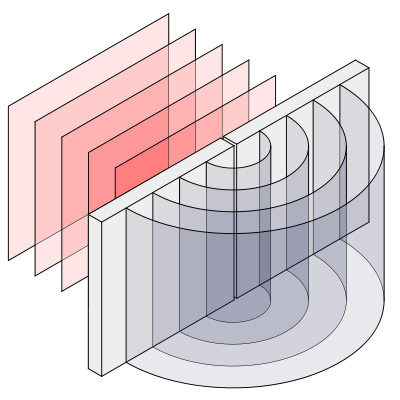First, some terms: The surfaces you are drawing are called "wavefronts", which are surfaces of constant phase. We usually refer to your |||| waves as "plane waves", meaning that the wavefronts are nice planes. Similarly, we call your )))) waves "spherical waves" because the wavefronts are spheres. So those are the terms I will use. Also, the basic ideas are exactly the same for sound and light, so I will try to answer both parts of your question at the same time.
If the source of a spherical wave is really far away, the sphere is really large by the time it gets to you. But you'll only be dealing with a small part of that sphere, so it looks pretty flat to you. That is, you can approximate the sphere as a plane (in a small region). For example, you might imagine a star as a source of perfect spherical light waves -- the star is roughly spherical, so the waves can be spherical. (A very crude model, but let's just go with it.) But that star is so far away that by the time the light reaches us, each sphere is enormous. And since our eyes or any telescope or whatever that we use will be tiny compared to that enormous distance, the sphere is basically flat to us; the waves are basically plane waves.
You can only have perfect plane waves if the source of the waves is infinite and acting in perfect harmony -- or if it's just infinitely far away. Since we never really have infinite sources, we never really have plane waves. But some times we have a really large source, so we can approximate the waves as plane waves.
So in the real world, you never have perfect plane waves or spherical waves, but they are frequently good approximations. And those approximations are easy to deal with (for calculations), so we use them a lot. But in reality, every wave we get is imperfect, and some sort of wiggly wave front.
It may be helpful for you to read about Huygens' principle.


